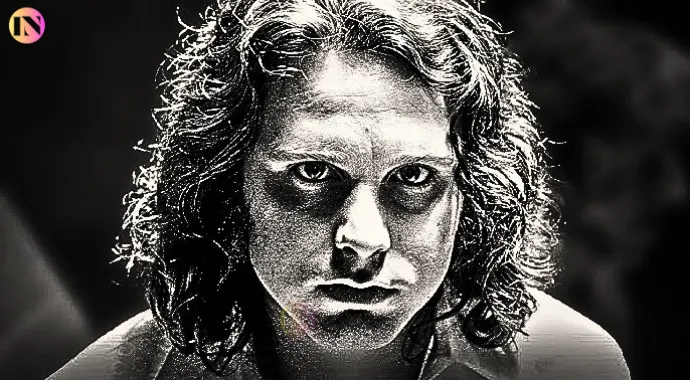Jim Morrison, The Doors’ 1971 hit “Riders on the Storm” is an iconic piece of rock history, known for its haunting melody, poetic lyrics, and ethereal atmosphere. Yet, beneath the surface lies a chilling backstory that adds a macabre layer to its legacy. The song, Jim Morrison’s final recording before his untimely death in 1971, draws inspiration from a dark and unsettling source — a real-life serial killer named William “Billy” Cook.
Table Of Contents
The Killer on the Road
While “Riders on the Storm” captivates with its hypnotic groove and philosophical musings, Morrison embedded a sinister narrative within the lyrics. The second verse explicitly references a murderer:
“There’s a killer on the road, his brain is squirmin’ like a toad. If you give this man a ride, sweet family will die.”
This eerie passage was inspired by Billy Cook, a hitchhiking serial killer who terrorized motorists in the early 1950s. Over the course of 22 days from 1950 to 1951, Cook brutally murdered six people while traveling from Missouri to California. His crime spree was marked by senseless violence and a disturbing lack of remorse.
Cook often forced his victims to drive for hours before executing them and leaving their bodies abandoned by the roadside. In some instances, his attacks appeared random, driven by robbery or sheer malice. His chilling mantra, as reported by Time, was: “I hate everybody’s guts. And everybody hates mine.”
Cook’s reign of terror ended in 1952 when he was captured at the Mexican border and subsequently executed in the San Quentin gas chamber.
Morrison’s Fascination with Billy Cook
Jim Morrison’s fascination with Cook’s story ran deep. The Doors’ frontman, known for his dark, poetic sensibilities and love of noir narratives, explored Cook’s life through his own artistic lens. Morrison even created a short film titled “HWY: An American Pastoral”, where he portrayed an anonymous hitchhiker named Billy — a clear nod to Cook’s persona. In the film, the hitchhiker murders the driver who picks him up, mirroring Cook’s real-life atrocities.
The film concludes with Morrison’s character standing outside the famed Los Angeles nightclub Whisky a Go Go, one of The Doors’ early haunts. This unsettling exploration of murder and the open road underscores Morrison’s preoccupation with the thin veil between life and death, reality and imagination.
Crafting “Riders on the Storm”
The genesis of “Riders on the Storm” traces back to an impromptu jam session. The Doors were experimenting with “Ghost Riders in the Sky,” a classic Western folk ballad that tells the tale of spectral cowboys chasing wayward cattle across the heavens. Inspired by the eerie imagery and minor-key composition, keyboardist Ray Manzarek and Morrison reshaped the piece into an original track.
Manzarek recalled in a 2014 interview:
“I proposed the bassline and piano part. The jazzy style was my idea. Jim already had the story about a killer hitchhiker. Serial killers are all the rage now, but they go back to Billy the Kid. In essence, it was a very filmic song about a serial killer—way ahead of his time in 1970.”
The band’s drummer John Densmore added:
“Jim had notebooks filled with poems and writings. He’d draw from them during our sessions. His film HWY was a precursor to the song. He even called his friend, poet Michael McClure, and pretended he had committed a murder just to gauge his reaction. That was Jim — imaginative and provocative.”
A Legacy of Mystery and Mortality
“Riders on the Storm” stands as a haunting swan song for Morrison, capturing his brooding artistry and love of mythic storytelling. Its release shortly before Morrison’s death at age 27 casts the track in an almost prophetic light. The spectral rain sound effects, the whispered vocals beneath Morrison’s lead, and the foreboding lyrics make it a track that feels like a ghost story echoing across the decades.
Beyond the song’s chilling origins, it remains a testament to Morrison’s ability to weave the dark fabric of reality into his music. His interest in life’s fringes — from the counterculture to the criminal underworld — shaped not only his image but also the enduring allure of The Doors.
“Riders on the Storm” transcends being just a rock anthem; it’s a poetic meditation on danger, the unknown, and the ever-present specter of death on the open road.

It is the best time to make some plans for the future and it’s time to be happy. I have read this post and if I could I want to suggest you few interesting things or advice. Perhaps you can write next articles referring to this article. I wish to read even more things about it!